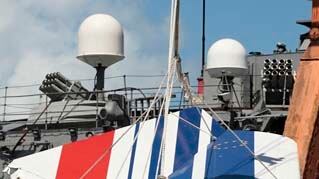
French air-crash investigators added a new twist today to the mystery of why Air France Flight 447 disappeared into the Atlantic on June 1, killing 228 people. At a news conference in Paris, they seemed sure of one thing: that the Airbus A330 did not break up in the air but when it hit the water. They came to this conclusion from looking at what little debris has so far been recovered. The lead investigator, Alain Bouillard, said “visual examination of the debris shows that the plane hit with the bottom of its fuselage with very strong vertical acceleration.” A key clue to this was, he said, from shelves in the galley that were compressed from the bottom up.
“Strong vertical acceleration” is a technical term that means, simply, that the A330 was falling from the sky at a very high speed. But Bouillard also said that it was traveling forward “in the direction of the flight.” Put these two things together and it describes not a nosedive but a combination of forward and vertical forces—not so much a belly-landing as ripping into the water with great violence. Citing the compression of the galley actually adds to the degree of the violence because that galley is not at the point of impact. It has a whole cargo deck under it. No wonder that, as the French investigators now say, the A330 broke up when it hit water.
Why would an airplane, if still intact, fall 35,000 feet? Few if any airliners have ever crashed from cruise altitude.
Why would an airplane, if still intact, fall 35,000 feet? Few if any airliners have ever crashed from cruise altitude. Most crashes occur close to the ground, either during landing approaches (as in the Yemenia A310 crash this week in the Comoros Islands) or after getting into difficulty shortly after takeoff. Yet this is what Flight 447 did.
First, it means that the pilots had already lost control when the plunge began. Second, it means that they were unable to regain control. The forces already in play during the plunge would probably have made that impossible.
Then there is the only technical diagnosis we will ever have in the absence of the black boxes, the data sent in bursts from the A330 as its systems failed, one by one. That data indicated a loss of pressure in the cabin, what is called depressurization. Sometimes this can be sudden and explosive, which is why it seemed likely that the A330 had broken up before it hit the water. If it didn’t, this means that there was, somewhere in the airplane, a structural failure that produced a slow leak of pressure. Was this enough to impair the pilots but not enough to destroy the airplane in the air? Only finding the black box could answer that.
There is one scenario remaining that would be consistent with this new picture of Flight 447’s long fall to the Atlantic. That would be a stall, either a high-speed stall where the airplane exceeded its safe limits, or a stall at around 300 mph, the point at which at 35,000 feet the A330 would lose its aerodynamic grip on the air. A high-speed stall would almost certainly have led to the airplane tearing apart. Today’s announcement rules that out. There are many other factors with a bearing on how the A330 behaved during the plunge, including the turbulence from the storm in the area, but its fate was already sealed if it stalled.
That leaves why?—the big why? And the French investigators gave a guarded, legalistic comment on that, about the much-discussed faulty speed readings given by gauges called pitot tubes. These were, said Bouillard, “something strongly suspected” in the faulty speed readings, but he added, “It is an element but not the cause.”
Xtra Insight: Clive Irving: Changing Planes Can Kill You
Xtra Insight: Clive Irving: Airlines You Should Avoid
Clive Irving is senior consulting editor at Condé Nast Traveler, specializing in aviation.






